#1 Tip for Elk Hunting Success

Dirk Durham
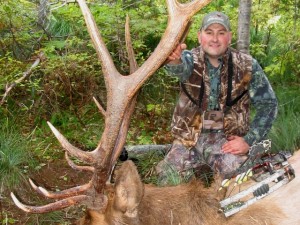 When I think of elk hunting advice to pass on to others, I can’t help but recommend persistence. Whether you are fine-tuning your skills at calling, shooting, or just mental toughness, you must never give up at working hard to succeed. It’s easy to give up when faced with adversity and excuses can be easy to find. Success can come in the first five minutes as well as the last five minutes of the hunt. You must stay focused on your goal and stick to it no matter what curve balls are thrown your way. If you can’t operate elk calls very well, begin months in advance mimicking elk vocalizations. If you are a decent caller, keep practicing in the off season to become an expert. Do you desire to be a better shot with your weapon? Your prey deserves nothing but a swift, humane death, and being persistent in your practice with the weapon of your choice will ensure an ethical kill. Regardless of the goals you have set forth for yourself, persistence is what will carry you through time and time again to achieve success in the elk woods. We wait way too many months throughout the off-season to give up easily and go home to tackle some highly anticipated “Honey Do’s”!
When I think of elk hunting advice to pass on to others, I can’t help but recommend persistence. Whether you are fine-tuning your skills at calling, shooting, or just mental toughness, you must never give up at working hard to succeed. It’s easy to give up when faced with adversity and excuses can be easy to find. Success can come in the first five minutes as well as the last five minutes of the hunt. You must stay focused on your goal and stick to it no matter what curve balls are thrown your way. If you can’t operate elk calls very well, begin months in advance mimicking elk vocalizations. If you are a decent caller, keep practicing in the off season to become an expert. Do you desire to be a better shot with your weapon? Your prey deserves nothing but a swift, humane death, and being persistent in your practice with the weapon of your choice will ensure an ethical kill. Regardless of the goals you have set forth for yourself, persistence is what will carry you through time and time again to achieve success in the elk woods. We wait way too many months throughout the off-season to give up easily and go home to tackle some highly anticipated “Honey Do’s”!
Ron Niziolek
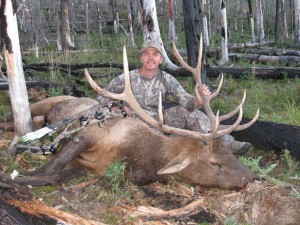 Practice like you mean it! Practice sessions are where you can develop your predator skills; stalking animals with or without a bow is how you perfect those skills. You can do this year-round. I personally don’t compete much in 3D shoots, but they can be a great way to develop confidence in stressful conditions. Personally, I like to visit the woods or mountains, roving and stump shooting. I do this in full hunting gear, daypack, rangefinder and binoculars included. I simultaneously use visualization while stalking and shooting at stumps, dirt clods, or pine cones. I’ll spot something in the distance, pretend it’s a big buck or bull, and quickly analyze a good stalking path and commence hunting. Yes hunting! I’ll hunch over or crawl, all the while pretending it’s a real animal that I’m stalking. I use this time to practice with my range estimation and then back it up with my rangefinder. When I make it within range of my target, I simulate the shot as if it’s the one and only one I’ll get all season, putting pressure on myself to make it count. Practice sessions like these are extremely effective. If you aren’t including something similar in your practice sessions, you should. Remember to visualize your target animal while stalking and while shooting. It will pay off for you.
Practice like you mean it! Practice sessions are where you can develop your predator skills; stalking animals with or without a bow is how you perfect those skills. You can do this year-round. I personally don’t compete much in 3D shoots, but they can be a great way to develop confidence in stressful conditions. Personally, I like to visit the woods or mountains, roving and stump shooting. I do this in full hunting gear, daypack, rangefinder and binoculars included. I simultaneously use visualization while stalking and shooting at stumps, dirt clods, or pine cones. I’ll spot something in the distance, pretend it’s a big buck or bull, and quickly analyze a good stalking path and commence hunting. Yes hunting! I’ll hunch over or crawl, all the while pretending it’s a real animal that I’m stalking. I use this time to practice with my range estimation and then back it up with my rangefinder. When I make it within range of my target, I simulate the shot as if it’s the one and only one I’ll get all season, putting pressure on myself to make it count. Practice sessions like these are extremely effective. If you aren’t including something similar in your practice sessions, you should. Remember to visualize your target animal while stalking and while shooting. It will pay off for you.
Mark Skousen
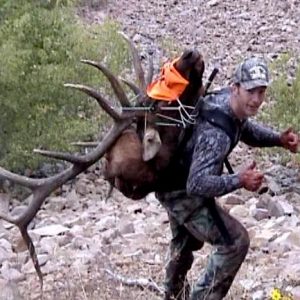 I have spent the last 11 months preparing myself to hunt elk in September. I prepare physically by lifting weights, mountain biking, running, and hiking. I fine tune my bow rig, spend my fair share on new hunting gear, and shoot my bow nearly every day. All of these things are critical to be successful as a DIY public land bowhunter but………
I have spent the last 11 months preparing myself to hunt elk in September. I prepare physically by lifting weights, mountain biking, running, and hiking. I fine tune my bow rig, spend my fair share on new hunting gear, and shoot my bow nearly every day. All of these things are critical to be successful as a DIY public land bowhunter but………
The one piece of advise that makes the biggest difference for me to continually harvest elk on public land is to prepare mentally. So many things get thrown at an elk hunter over the course of a 5-7 day hunt or a 30-day elk season. You really need to prepare mentally for those circumstances and situations. When I wrestled in High School, I remember working my butt of all week in practice, but the last practice of the week was a mental practice. We would literally spend 30 minutes with our eyes closed going over our moves and thinking through different situations that could occur through the course of a match. Part of my mental preparation included knowing my opponent and what I should expect.
Similarly, in elk hunting you need to learn as much as you can about the quarry you are pursuing. Prepare mentally for the terrain you will be hunting and the worst-case weather you can expect. Prepare mentally for the hunting pressure and how you will react to having your game-plan foiled by other hunters. As a public land elk hunter, preparing mentally has been my number one key to success to consistently harvest elk. Good Hunting!
Matt Brimmer
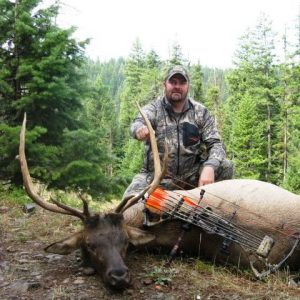 Being mobile and flexible throughout the season is a big part of my success. Setting up a full size Wall Tent camp not only takes time, but can take even longer to tear down and leave the area quickly. We have found that using smaller Camp Trailers, Pop Ups, and tents allow us to change locations quickly. Being “Gypsy” hunters over the past 5 years has definitely improved our success. There are numerous reasons we will move camp, but the big two are Hunting Pressure and Lack of Rutting Activity.
Being mobile and flexible throughout the season is a big part of my success. Setting up a full size Wall Tent camp not only takes time, but can take even longer to tear down and leave the area quickly. We have found that using smaller Camp Trailers, Pop Ups, and tents allow us to change locations quickly. Being “Gypsy” hunters over the past 5 years has definitely improved our success. There are numerous reasons we will move camp, but the big two are Hunting Pressure and Lack of Rutting Activity.
Dale Pearson
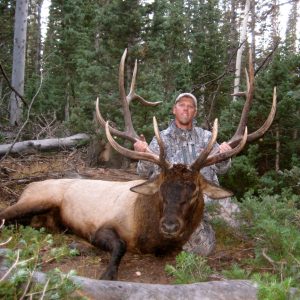 I’ve been hunting elk for several years now and I think I’ve experienced about every scenario and emotion that comes with hunting elk, from the lowest of lows to the highest of highs. In my experience, there are a few things I’ve noticed in my set-ups that I believe have made the difference between success and failure.
I’ve been hunting elk for several years now and I think I’ve experienced about every scenario and emotion that comes with hunting elk, from the lowest of lows to the highest of highs. In my experience, there are a few things I’ve noticed in my set-ups that I believe have made the difference between success and failure.
After locating the elk, I like to stay quiet until I’m inside 150 yards. This can mean the difference in a bull rounding up his cows and pushing up the canyon or having to face a challenger or checking out a cow in estrus. Another bit of it contains many aspects, but being prepared for anything is a must! Having a calm mind to react properly is huge in my book and it trickles down from there to fitness and practicing with your weapon of choice.
Jeff Skousen
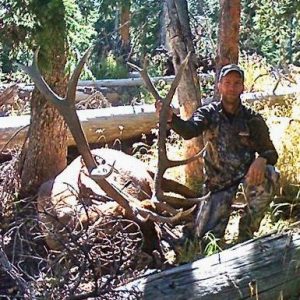 Less than a day into the Utah elk hunting season we already have a bull down and I’m reminded again of what it takes to consistently kill elk on public land. The keys to my success have been early season scouting and being flexible when things don’t go as planned.
Less than a day into the Utah elk hunting season we already have a bull down and I’m reminded again of what it takes to consistently kill elk on public land. The keys to my success have been early season scouting and being flexible when things don’t go as planned.
Opening morning this year brought a lot of hunting pressure. Despite our best efforts to scout and pattern a large herd, light couldn’t come fast enough as some other ambitious (and not so courteous) hunters came up behind us on horses and busted out the herd of 50 elk standing in front of us. Because we had scouted several areas, we relocated to another area for the afternoon/evening hunt and found some undisturbed elk coming to a water hole where we connected on a small bull. Having flexibility and having scouted several areas led to our ultimate success on opening day.
Corey Jacobsen
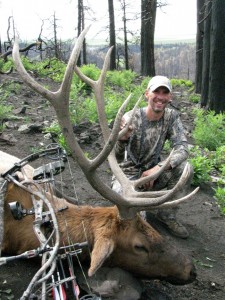 When it comes to success, it’s hard to pin it on one particular thing. One hunt may be decided by physical conditioning, while another might take good calling skills. Yet another could ultimately hinge on shooting skills. Knowing this, I will say I have had more hunts fail due to poor set-ups, than any other reason.
When it comes to success, it’s hard to pin it on one particular thing. One hunt may be decided by physical conditioning, while another might take good calling skills. Yet another could ultimately hinge on shooting skills. Knowing this, I will say I have had more hunts fail due to poor set-ups, than any other reason.
Set-ups play a very major role in determining the outcome of the hunt. I can’t count how many hunts have been blown by the set-up – too much brush to shoot through, not enough cover to hide in, no shooting lanes, inconsistent wind currents, caught in the open…the list goes on and on. There is one word I always repeat to myself when I’m setting up on a bugling bull: ARC.
The meaning of the word “ARC” is two-fold. First, a bull will often approach your set-up by circling down wind. As the shooter, I like to visualize a straight line from the caller to the bull, then draw an imaginary “arc” on the down wind side that the bull will likely follow as he comes in. I always try to set up along that imaginary arc. The second thing “ARC” means to me is Always Remember Concealment. Elk survive by three main senses: sight, sound, and smell. Remembering to conceal yourself from these senses EVERY TIME you set up is vital.
Here are a few things I always try to remember when it comes to setting up:
1. Set up in front of brush or trees and allow your camouflage to break up your outline, concealing you from an elks’ view and giving you clearer shooting lanes. Also be sure to draw your bow when the elks’ vision is obstructed (i.e., head turned or behind a tree).
2. Clear out the area where you set up. This will eliminate the chance of breaking a twig as you shift your weight to draw your bow, or snapping a branch as you come to full draw.
3. OBEY THE WIND! No argument, no excuses. If the elk smells you, the hunt is over. No amount of cover spray, odor eliminating gear, or luck will make your scent disappear from an elk’s nose if the wind is going straight towards him. Keep the wind in your favor, always!
4. Hunt with a partner (shooter/caller scenario). This is an incredibly effective way to call the bull past the shooters’ set-up and increase the chances of the shooter getting a high-percentage shot.
5. Check distances with a rangefinder before the elk comes in. It can be very helpful to use a rangefinder to determine the distances to trees, stumps, or rocks around your set-up, thus eliminating any guessing when the bull shows up. There’s few things more frustrating than having everything finally come together only to misjudge the bull by 5-6 yards and shoot under him!
Putting these critical pieces together as you are selecting your set up can often be the difference between success and failure. Neglecting to do so, often guarantees the outcome before the contest begins.
